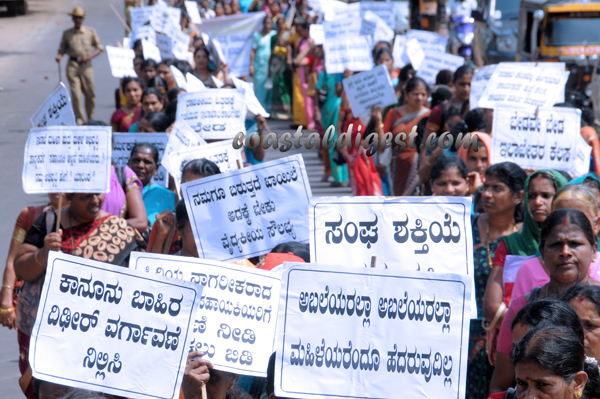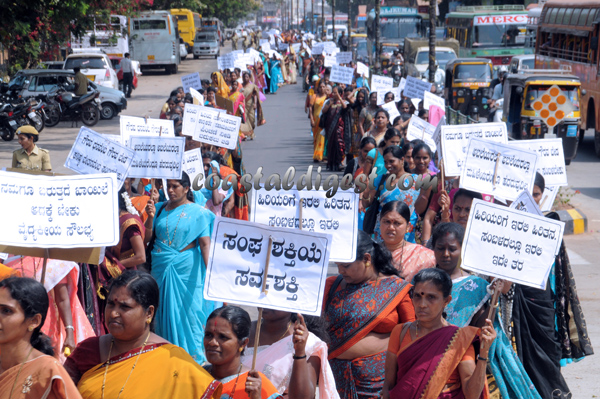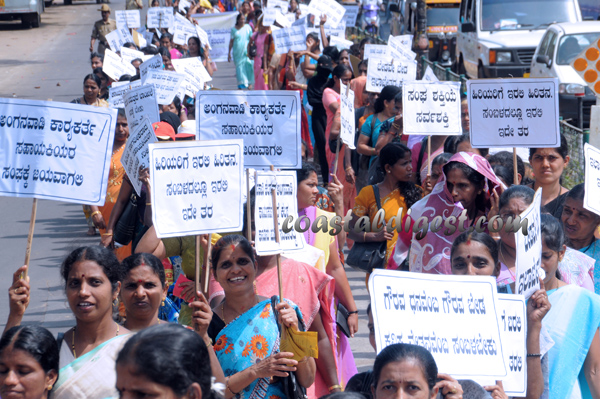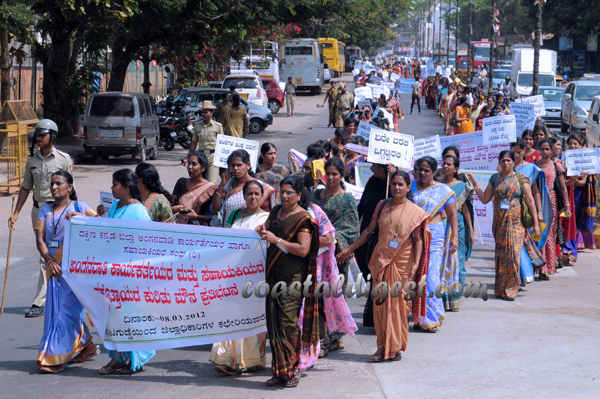Mangalore, March 8: The city witnessed protest by women on International Women's Day, as hundreds of Anganwadi workers took to the streets on Thursday against the 'unfair' treatment.
The protesters marched from Lighthouse Hill to the office of the Deputy Commissioner where they held a public meeting under the banner of Dakshina Kannada District Anganwadi Workers' and Helpers' Association. The main demands of the protesters included timely payment of honorarium.
They later held demonstration at the Town Hall, the venue for the Women's Day celebrations, even as Deputy Director of Women and Child Welfare A. Shakuntala, who was in the Hall, did not accept their memorandum. The women said they came into the hall only if the memorandum was accepted.
“It is an irony that the main force behind this celebration is made to sit out in the hot sun. Are we not women? While we are here, the Stree Shakti Groups, for whom we toil hard, are being felicitated inside,” said a distraught Vishalakshi, secretary of the association.
Ms. Vishalakshi said Deputy Director Ms. Shakuntala had agreed a few days ago about accepting the memorandum and inviting them for the function.
Several anganwadi workers and helpers, who work under the Department of Women and Child Development to ensure that children received nutritious supplements, took out a silent march and presented a memorandum to the In-charge Deputy Commissioner. They came to the venue of the function around 11.30 a.m.
Despite sending feelers about their presence, Ms. Shakuntala did not agree to accept their memorandum.
She came out along with Coastal Development Authority Chairman B. Nagaraj Shetty around 1.30 p.m. to meet the protesting women. But the anganwadi workers refused to give any memorandum and left the venue.














Comments
Add new comment